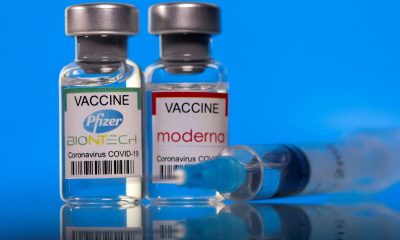Omicron-targeting vaccines will arrive in early fall, based on the latest update from public health sources.
After the U.S. Food and Drug Administration (FDA) urged vaccine makers in June to come up with boosters targeting the newer strains and variants of the novel coronavirus, Moderna and Pfizer are getting closer to the release of their updated vaccines.
The U.S. Department of Health and Human Services announced that the new boosters from Moderna and Pfizer are likely to arrive in September, pending signoff by federal health agencies.
An FDA spokesperson told CNN that the two pharmaceutical companies “anticipate the modified vaccines being available as early as September.”
The new boosters will be bivalent and come with an omicron BA.4/5 component to ensure efficacy against the new subvariants.
The U.S. government has already purchased 105 million bivalent boosters from Pfizer and 66 million doses from Moderna. They will be used in fall and winter.
Before their release for wider use, the new boosters should first get authorization from the FDA and a recommendation from the U.S. Centers for Disease Control and Prevention (CDC).
An FDA spokesperson confirmed that the agency has been “working closely with vaccine manufacturers over the past several months to ensure that modified COVID-19 vaccines are available this fall.”
“Once boosters containing a BA.4/5 component become available, individuals may consider getting one following an appropriate interval following their prior dose,” the spokesperson continued.
The vaccine makers assured in late June that the bivalent boosters targeting omicron provide a stronger immune response than the current vaccines.
U.S. regulators recently announced they would no longer authorize a second COVID-19 booster shot for adults below 50 this summer using the current vaccines. This would suggest that public health officials could go all out with targeting the newer subvariants with the revamped vaccines, according to CBS News.
COVID infections have been rising in the U.S. since the BA.4 and BA.5 subvariants of omicron came into the picture. They quickly pushed new daily cases above 125,000 and hospitalizations to 6,300 — the highest level since February.
















